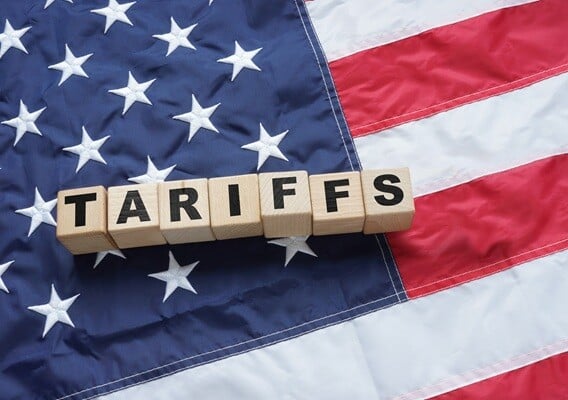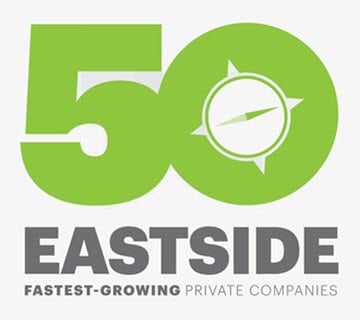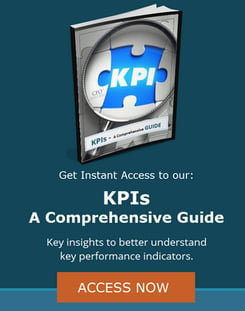 Executive Summary: Tariffs, particularly those on imports from key trading partners like Canada and Mexico, can have a far-reaching impact on U.S. businesses and the economy. While they may provide some protection for domestic industries, they also introduce significant challenges including higher costs, disrupted supply chains, and the need to make difficult decisions on pricing and profit margins. The ripple effects of tariffs can stretch across the broader economy, influencing consumer behavior and currency strength. Navigating these challenges successfully often requires the expertise of a CFO who can help businesses adapt, manage risks, and maintain financial health in an ever-changing economic landscape.
Executive Summary: Tariffs, particularly those on imports from key trading partners like Canada and Mexico, can have a far-reaching impact on U.S. businesses and the economy. While they may provide some protection for domestic industries, they also introduce significant challenges including higher costs, disrupted supply chains, and the need to make difficult decisions on pricing and profit margins. The ripple effects of tariffs can stretch across the broader economy, influencing consumer behavior and currency strength. Navigating these challenges successfully often requires the expertise of a CFO who can help businesses adapt, manage risks, and maintain financial health in an ever-changing economic landscape.
_________________________________________________________________
With tariffs being recently imposed on U.S. imports from Canada and Mexico, it is important for business owners to understand the risks to their business, both directly and on the economy at large, and how engaging with a skilled financial leader may help minimize the impact.
Let’s dive into what today’s tariffs really mean for your business and what your leadership can do to mitigate their impact.
Tariffs Explained
For business owners who understand the concept of tariffs more broadly but are not keenly aware of the intricacies of how they work or can affect the broader economy, let me provide brief introductory information on what tariffs are and explore the historic impact of the Hawley-Smoot Tariff on the United States and abroad.
What is a Tariff?
A tariff is a form of tax imposed by a government on goods or services imported into or exported from a country. The traditional objective of utilizing tariffs is to protect domestic industries from foreign competition, raise government revenue, and potentially influence foreign policy or trade agreements.
Tariffs take shape in two primary forms:
- Import Tariffs are imposed on goods and services by the country importing them. The tariffs imposed on Canada and Mexico by the United States are import tariffs. The typical objective is to protect domestic businesses by increasing the price on foreign goods to incentivize domestic consumers to buy domestic products. Import tariffs are also a way for the federal government to generate revenue.
- Export Tariffs are placed on goods being exported from a country. Export tariffs are less common and typically utilized to protect strategic resources or scarce commodities. They also generate revenue for the federal government.
Whether placed on the import or export, tariffs can then have a specific type, such as:
- Specific: Placed on a certain good or quantity of that good.
- Ad valorem: Typically, a percentage of value of the good.
- Compound: A mix of specific and ad valorem.
The U.S. tariffs on Canadian and Mexican imports are ad valorem tariffs.
A Lesson from History: The Hawley-Smoot Tariff
One of the most well-known and largest tariffs in U.S. history is the Hawley-Smoot tariff of 1930. Enacted shortly after the stock market crash of 1929 and in the early stages of the Great Depression, the intent of the Hawley-Smoot tariff was to protect American farmers and industries by raising tariffs on over 20,000 imported goods. While the goal was to insulate the domestic economy from competing foreign products, the long-term economic repercussions were devastating, including:
- Domestic Economic Impact: While the intent of the Hawley-Smoot tariff was to protect U.S. industry, the tariff only served to exacerbate the effects of the Great Depression. Diminished global trade resulting from retaliatory tariffs catalyzed the economic downturn, leading to a decline in industrial production which resulted in mass layoffs and further economic duress.
- Global Economic Retaliation: Many key global trade partners imposed their own import tariffs as a retaliatory act, which significantly stifled international trade.
Tariffs on Canada and Mexico
Looking at the potential impact of tariffs today, we should start by analyzing our trade relationship with Canada and Mexico, and the goods we primarily import from each.
- In 2024, the U.S. imported $413 billion of goods from Canada. The most significant imports are:
- Crude Petroleum: Canada is the largest supplier of crude oil to the U.S. Increased crude prices result in increased transport costs, therefore impacting the entire supply chain.
- Vehicles: Both finished vehicles and auto parts are imported from Canada.
- Electrical Machinery: Includes computers and telecommunications equipment.
- Timber and Lumber: Canada exports significant quantities of wood products to the U.S., impacting construction costs for new residential and commercial buildings.
- In 2024, the U.S. imported $506 billion of goods from Mexico. The most significant imports are:
- Vehicles: Mexico is a major exporter of vehicles and automotive parts to the U.S.
- Machinery and Electronics: Includes computers, telecommunication equipment, and industrial machinery.
- Agricultural Products: Mexico is a key supplier of fruits, vegetables, and beverages like tomatoes, avocados, and beer.
- Mineral Fuels: Including oil and gas products.
Potential Impacts of Tariffs on U.S. Businesses
The ultimate impacts of imposing tariffs on imports from Canada and Mexico will take years to fully understand. That said, the immediate impacts are likely to have a significant effect on the U.S. economy, and specifically, private businesses. Some potential impacts include:
- Increased Costs for U.S. Businesses: Both goods used by businesses and materials used for production and resale are likely to experience an increase in cost. This effect can double the impact on a business at different points on the income statement. If property, plant and equipment (PP&E) costs for goods such as vehicles and electronics rise, the business will ultimately experience greater expenses, and therefore, reduced profit. Moreover, as production supplies expense increases, the business will have to decide whether to pass those price increases to the end consumer or compress markup, which will erode profit margin.
- Supply Chain Disruption: Supply chains from Canada and Mexico to the U.S. are intricate and complex. As import prices increase, there may be delays and shortages, possibly resulting in further short-term price increases on goods that are integral to domestic production.
- Trade Shifts: While domestic businesses may look to other sources of goods at relatively lower prices post-tariff, there are also opportunities for Canadian and Mexican businesses to shift their efforts to trade partners beyond U.S.-based companies.
How Will Tariffs Impact Business Decision Making?
Domestic businesses will need to consider new strategic decisions because of tariffs being imposed, which will begin with materials sourcing and end with pricing strategy.
- Sourcing Production Materials: As price increases and the supply chain is impacted, businesses may be forced to identify alternate options for production materials. While the impact may be minimal for many, for others it could result in a wholesale shift in materials sourcing, requiring significant research and resulting in entirely new business processes.
- Cash Flow Management: Because price increases may impact both operational expenses and cost of production inputs, managing cash flow becomes a much more delicate act. Ultimately, the resulting margin compression may impact strategic capital reinvestment, payroll expenses, and owner distributions.
- Profit vs. Revenue: Higher input costs can squeeze profit margins, so businesses may need to adjust their pricing strategies or find ways to streamline operations to maintain profitability. Ultimately, the business will have to decide whether to concede decreased profit margin or potential impacts on revenue due to price increases.
- Smaller vs. Larger Businesses: Smaller businesses are typically more vulnerable to the impact of tariffs than larger businesses due to limited cash reserves and fewer opportunities to negotiate lower prices with suppliers. Larger businesses may have more leverage in sourcing goods due to volume pricing discounts and the ability to shift sourcing to regions not impacted by tariffs.
The Ripple Effect on the Broader Economy
We have already discussed the immediate and direct impact of tariffs on U.S. imports. But there will likely be a secondary and broader effect on the U.S. economy that will also adversely impact businesses, including:
- A Weakening of the Dollar: If the imposition of tariffs does in fact cause an economic decline, the dollar may weaken, which will have a further impact on the cost of imports, all other things being held equal.
- Lower Consumer Discretionary Spending: As tariffs increase the price of imported goods, consumers may cut back on discretionary spending. Higher prices on everyday products, such as consumer staples and food, can reduce the amount of money available for other goods and services, impacting retailers and other businesses in the consumer sector.
- Higher Consumer Debt Delinquency: Increased consumer prices and reduced disposable income can lead to higher rates of debt delinquency. Consumers may struggle to pay off credit cards or loans if their purchasing power is diminished, leading to financial stress and reduced willingness or ability to finance new purchases.
How a CFO Can Help a Business Navigate Tariffs
When tariffs are imposed, businesses may face unpredictable challenges necessitating holistic changes to their finance, operations and production functions. A CFO can help businesses navigate these changes by partnering with business leaders and providing expertise in matters such as:
- Cost Management: Adjusting pricing strategies, streamlining operations, and identifying cost-saving opportunities to mitigate the financial impact of higher tariffs.
- Cash Flow Optimization: Refining the cash flow management process, helping business owners to continue strategic reinvestment while mitigating liquidity concerns.
- Strategic Planning: Building a strategic roadmap addressing business continuity risk matters, including planning for trade disruptions and cost increases, revenue stream diversification, margin and pricing management, contingent supply chains, and contract management.
When you need fractional financial leadership, we can help! Our team of experienced consulting CFOs has worked with organizations across all business stages and industries. They have the expertise needed to help your company weather today’s changing economic landscape and conquer whatever challenges lie ahead. Contact us today to find out how we can come alongside your organization to provide experienced financial leadership!
About the Author
Ryan Baer – Oregon & SW Washington Business Development Manager, CFO Selections
 Ryan Baer is a versatile finance and operations professional with over 20 years' experience spanning corporate finance, securities and banking, project leadership, and academic finance. The majority of his work has materialized at the nexus of finance and operations, where he has led a multitude of projects to implement process improvement with the objectives of increasing efficiency and control. Through various roles, he has had direct responsibility for the management of billions of dollars in public and private investments and has led projects impacting thousands of employees and clients. Over the course of his career, he has served as a fiduciary in both corporate finance and investment management and held positions in four highly regulated industries.
Ryan Baer is a versatile finance and operations professional with over 20 years' experience spanning corporate finance, securities and banking, project leadership, and academic finance. The majority of his work has materialized at the nexus of finance and operations, where he has led a multitude of projects to implement process improvement with the objectives of increasing efficiency and control. Through various roles, he has had direct responsibility for the management of billions of dollars in public and private investments and has led projects impacting thousands of employees and clients. Over the course of his career, he has served as a fiduciary in both corporate finance and investment management and held positions in four highly regulated industries.





